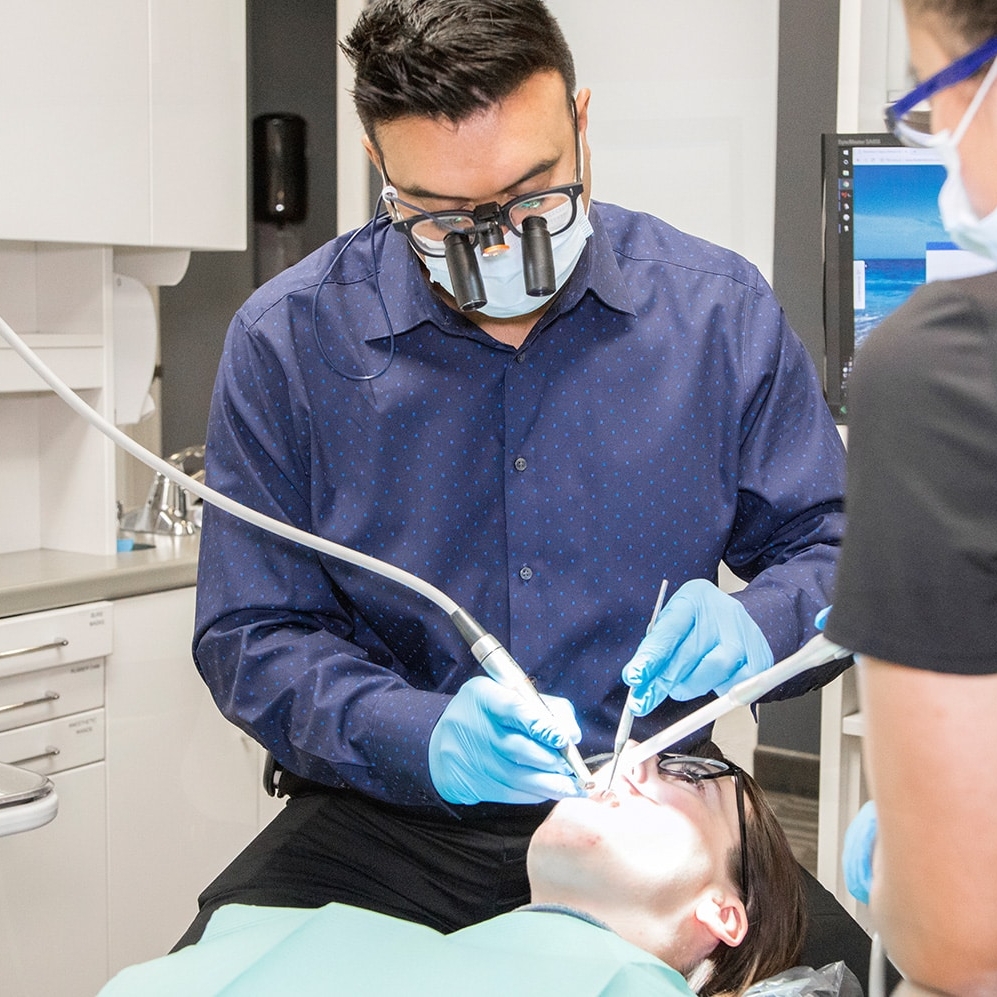Procera® Crowns In Calgary, AB
It has been traditional for prosthodontic crowns to be made from porcelain fused to metal as part of their construction. There are still many dental professionals who use this solid combination as a simple and cost-effective solution. A more recent development has been the introduction of fully ceramic Procera® crowns, which have revolutionized the aesthetics of many smiles. There is no difference between Procera® crowns and traditional crowns as they function exactly the same way, but since they are made of a 100% ceramic material, they look far more natural than traditional crowns.
The purpose of placing a dental crown is usually to strengthen a tooth that has been injured. There is no doubt that most dental professionals agree that, when possible, it is preferable to restore a natural tooth rather than replace it with a prosthetic alternative in most cases. There is no doubt that Procera® crowns are precision-engineered to create a beautiful fit and bring full functionality to an injured tooth.

Is a Procera® crown necessary?
It is important to keep in mind that unlike the majority of the body, the teeth are not capable of extensive healing. Therefore, once the enamel (or surface) of a tooth has been damaged in some way, it is not able to heal itself once the tooth has been injured. It is important to understand that dental crowns are placed in order to stabilize damaged teeth and prevent further damage from spreading. It is possible for the enamel to be damaged by trauma, bacterial infections, or decay. After a root canal procedure, it is common to use a crown to seal the tooth.
The Procera® crowns are a superior alternative to porcelain-fused-to-metal crowns (PFM). These advantages include:
- Biocompatibility – This is because Procera® crowns have been engineered to stimulate growth of the gums around them so that they can support the crown. Eventually, this will result in the gums being symmetrical and stable, and the healing will be successful.
- Fitting according to your specifications – Procera® crowns are customized by highly skilled technicians to ensure the perfect fit for each patient.
- Perfect color matching – A Procera® crown can be created in a color that perfectly matches the color of the teeth that it is replacing. As a result, onlookers are unable to see the restoration.
- There is no metal base to the crown – Traditional partially ceramic crowns appear natural from the top, but an unsightly metal band remains near the base of the tooth. The metal aspect of a Procera® crown has been eliminated completely.
In order to obtain a Procera® crown, what steps must be taken?
There is no doubt that placing a crown is one of the most common and straightforward procedures that dental professionals perform on a regular basis. Prior to treatment, X-rays and impressions are taken and a thorough examination is conducted in order to determine the best treatment plan. A dental professional should evaluate the health of adjacent teeth and gums to ensure that there are no underlying problems.
During the shaping of the tooth, a local anesthetic is administered in order to prevent any discomfort. It is necessary to shape the tooth in order to ensure that the crown will fit snugly on the tooth. The process is performed slowly and carefully in order to prevent damage to the soft tissues surrounding the tooth. Following the preparation of the tooth, the dental professional creates an accurate mold of the tooth and selects the porcelain color. During the time that the custom Procera® crown is being created in the lab, a temporary crown is placed on the patient.
At the next appointment, the temporary crown will be removed and the permanent crown will be placed. To ensure that bacteria are eliminated from the inner tooth, it is thoroughly cleansed. Using luting cement, the permanent Procera® crown is affixed onto the tooth, creating a beautiful smile once it is attached to the tooth.
Feel free to contact our office if you have any questions or concerns regarding Procera® crowns.